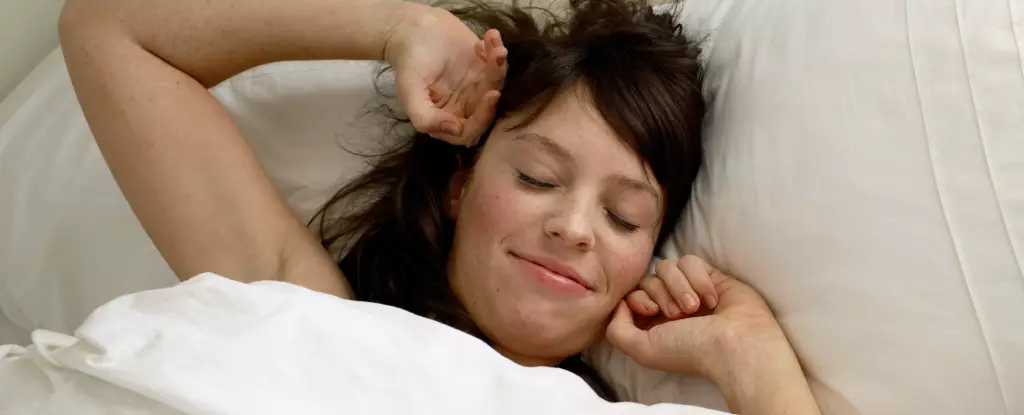Our subconscious minds hold profound abilities that often get overshadowed by waking distractions. Renowned author John Steinbeck once remarked, “It is a common experience that a problem difficult at night is resolved in the morning after the committee of sleep has worked on it.” This sentiment resonates not only in literary circles but also in scientific pursuits; recent advancements suggest that sleep can indeed facilitate problem-solving and creativity in ways that challenge our conventional understanding.
A remarkable study conducted by researchers at Duke University in 2024 illustrates that the quality of our decisions significantly improves after a night’s rest. Participants engaged in a simulated garage sale, sifting through various boxes filled with junk and a few valuable items. Interestingly, when pressured to make an immediate decision, participants often based their choices on the initial items they encountered, revealing a common cognitive bias known as anchoring. However, when allowed to sleep before making their selections, participants displayed a notable shift in their decision-making process. They no longer let the initial items skew their judgment. Instead, they could evaluate the items more holistically, demonstrating how sleep clears the mental fog that often clouds our judgment.
This phenomenon highlights an essential aspect of human cognition: the significance of time and rest in enhancing our analytical abilities. In our fast-paced lives, we can get enveloped in the chaos of first impressions, which may lead to hasty, uninformed decisions. Sleep allows our minds to process and rearrange information, acting as a sort of reset button that unveils a more rational perspective.
The benefits of sleep extend beyond mere reflection. According to a 2019 study, researchers found that subtle cues can bridge the gap between consciousness and the subconscious, leading to improved problem-solving capabilities. Participants were initially tasked with solving puzzles with a unique sound playing in the background. Subsequently, the same sound was played while they slept. Upon waking, participants demonstrated a higher success rate in solving the puzzles associated with the sound cues.
This evolutionary mechanism reveals that our brains never truly shut down during sleep; rather, they engage in a form of maintenance work, sifting through experiences, memories, and challenges. By linking physical cues to cognitive tasks, we can potentially harness the power of dreaming to unlock solutions to our dilemmas. It is as if our minds are diligently working on problems even when we are unaware.
Sleep not only enhances our ability to solve direct problems but also nurtures our capacity for creative associations. A groundbreaking study in 2023 threw light on how sleep enables us to recognize indirect relationships between disparate concepts. When participants learned about various items tied to an event, those who rested afterward were better equipped to identify subtle yet significant associations that would ordinarily go unnoticed. This discovery suggests that sleep serves as a transformative phase where our minds connect the dots, forging relationships that can inspire innovative ideas.
The potential implications of this finding are vast, challenging conventional educational approaches. The emphasis on continuous wakefulness to learn or create may overlook the extraordinary benefits of incorporating rest into our intellectual processes. Sleep, rather than being a mere necessity for health, emerges as an essential tool for cognitive advancement and creativity.
Delving deeper into the relationship between sleep and creativity, historical figures like Thomas Edison emphasized the value of brief periods between wakefulness and slumber. Edison’s unique technique involved holding a ball as he drifted off, allowing him to tap into that transient phase known as hypnagogia—where dream-like imagery surfaces. Research conducted in 2021 confirmed that participants exposed to a light sleep state showcased remarkable abilities in uncovering hidden patterns in problems.
Recent explorations into hypnagogic experiences further unravel the connection between creativity and sleep onset imagery. A study in 2023 demonstrated that participants engaged in creative tasks before sleep found that the resulting imaginative images influenced their problem-solving abilities. The evidence suggests that the period before falling asleep may be an underutilized time for breaking free from rigid thought patterns, paving new pathways for creativity to flourish.
In an age where productivity often trumps the necessity for rest, it is vital to recognize the extraordinary potential that sleep holds. The studies and anecdotes surrounding the power of dreams and sleep restoration affirm a simple truth: sometimes, stepping back and allowing our minds to wander through the landscape of dreams can lead to unexpected solutions and inspiration. Rather than viewing sleep as a hindrance, we should embrace it as an invaluable ally in our quest for creativity and clarity. Sleep, as Steinbeck aptly noted, works tirelessly on our challenges, often providing the resolution we seek when we least expect it.


Leave a Reply